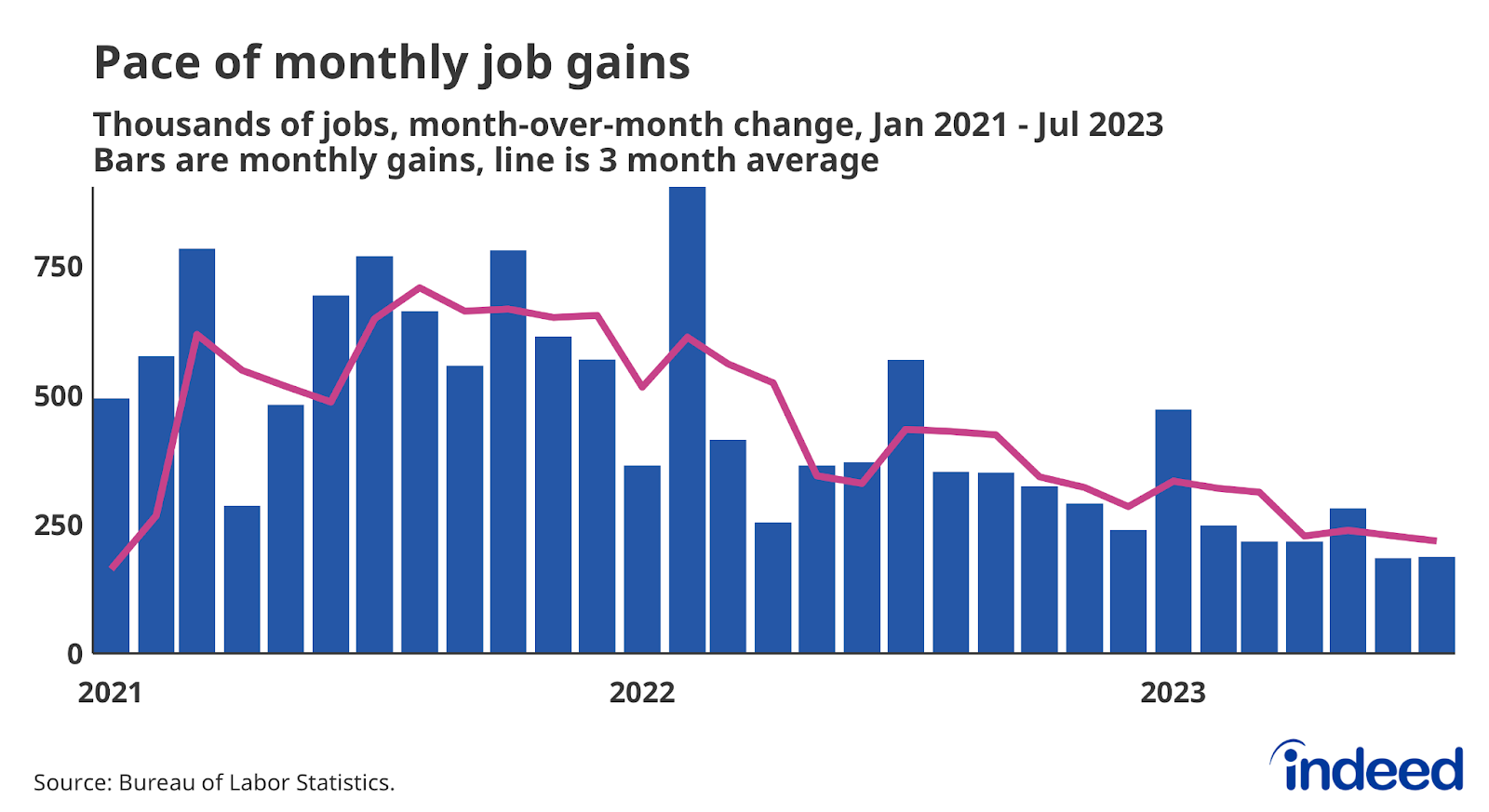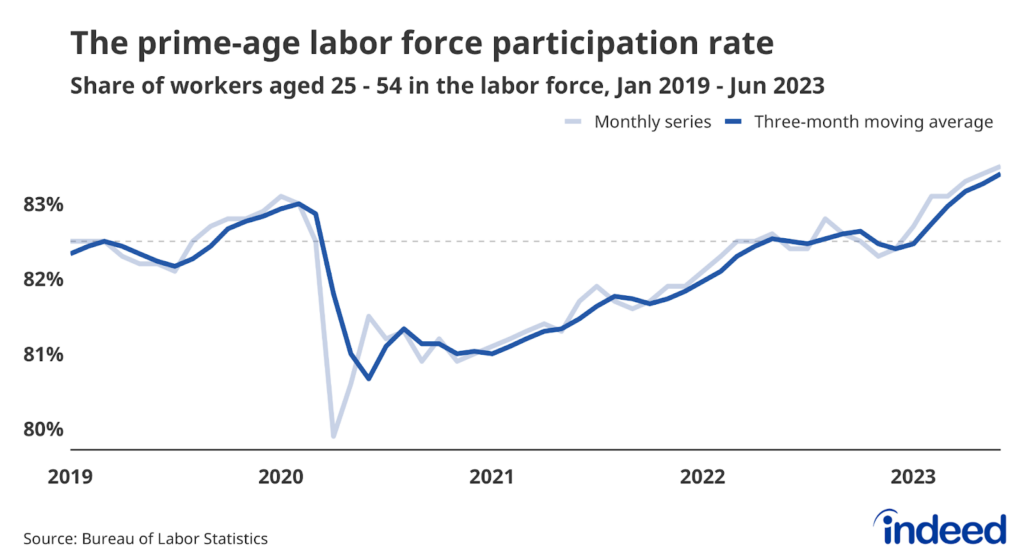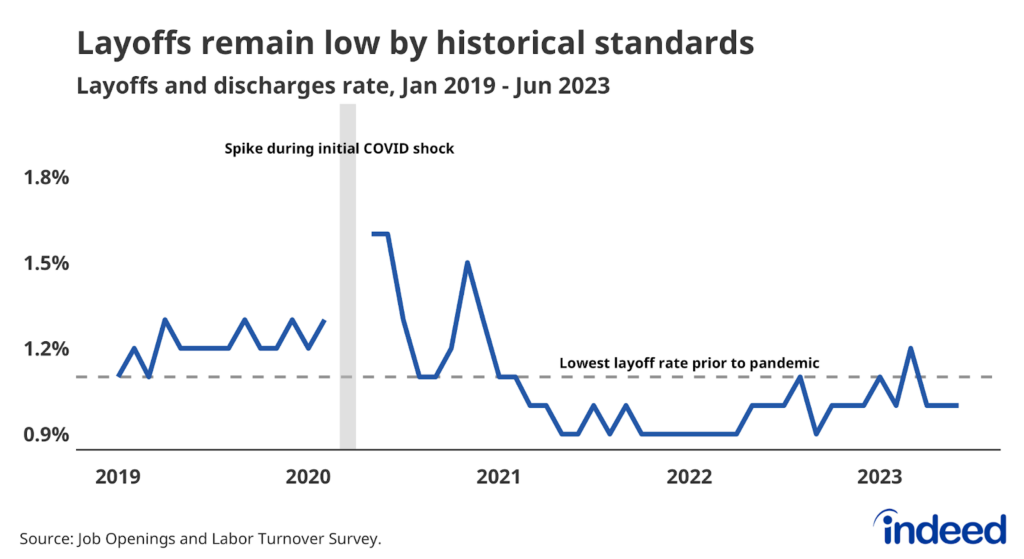Key points:
- Job growth slowed to 187,000 jobs in July with the three-month average ticking down to 218,000, a much slower rate than a year ago but still strong in the current market.
- The labor market remains tight with the unemployment rate at 3.5% and the share of workers ages 25 to 54 with a job at an over 20-year high.
- There are some signs of weakness in this report, but the overall picture continues to show a robust labor market.
If you’re freaking out after reading this jobs report, take a big breath. The labor market continues to slow down and job gains continue to decline. After years of very strong job gains, adding only 187,000 jobs in July might cause some anxiety. And job declines in traditional bellwether sectors including temporary services are flashing some yellow signals. But monthly gains at this level are still strong given slowing population growth and the overall tightness of the labor market. In order for the broader economy to pull off the soft landing everyone wants to see, this kind of slowdown (or even to a slightly slower level) is necessary. From the ground, this report may look a bit messy, but a higher, bird’s eye view helps put it into context.
Employers have added an average of 218,000 jobs over the past three months, down considerably from the 434,000 average over the same period last year. And the breadth of the job gains continues to decline, as the diffusion index — a measure of how many industries are adding jobs — dropped to 57.2 from 72.2 a year ago. Leisure and hospitality, a sector previously powering gains, has now lost much of its steam. Healthcare, another sector directly affected by the pandemic, has taken the baton and contributed 34% of the gains in July. One cause for concern in the report is that temporary help services, a traditional bellwether of hiring appetites, declined by over 22,000 jobs.
Despite the clear slowdown in hiring, workers are still faring well in this labor market. The share of prime-age workers with a job held steady at a more than 20-year high and unemployed workers are still finding jobs at a pace roughly equal to what they saw pre-pandemic. Given how slowly the population is growing and the current pace of job gains, we should expect workers to remain at least this engaged with the labor force for the foreseeable future. In this current market, monthly job gains above 100,000 are still strong.
This report contains many signs that we’re on the path to a soft landing. However, that path can also lead us to a sustained downturn if we miss the exit to a sustainable and strong labor market. We haven’t approached that fork in the road yet, but there is still a strong possibility that the labor market can rebalance without a recession.



